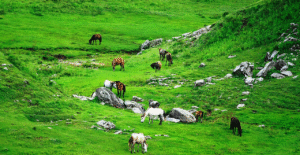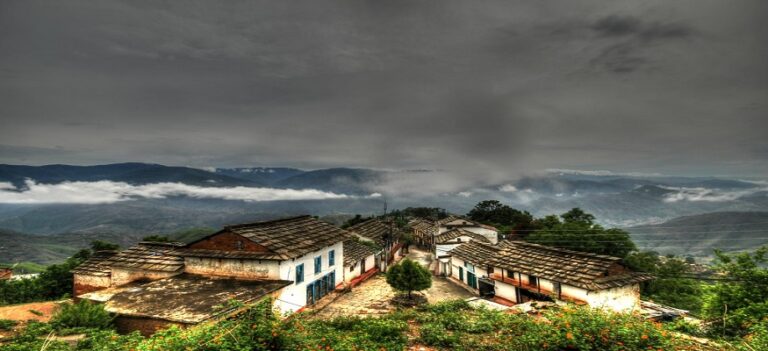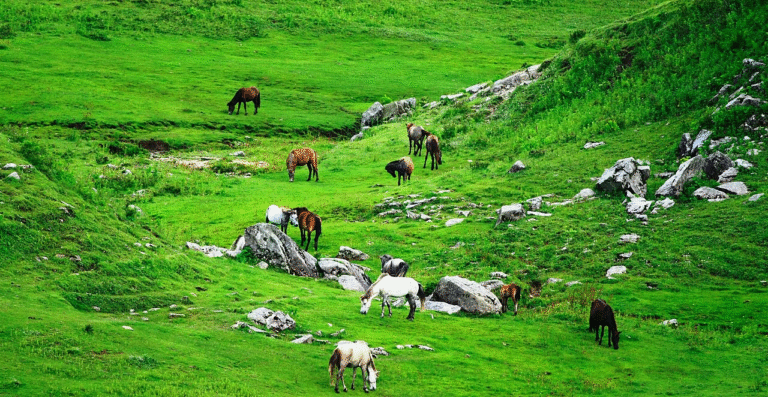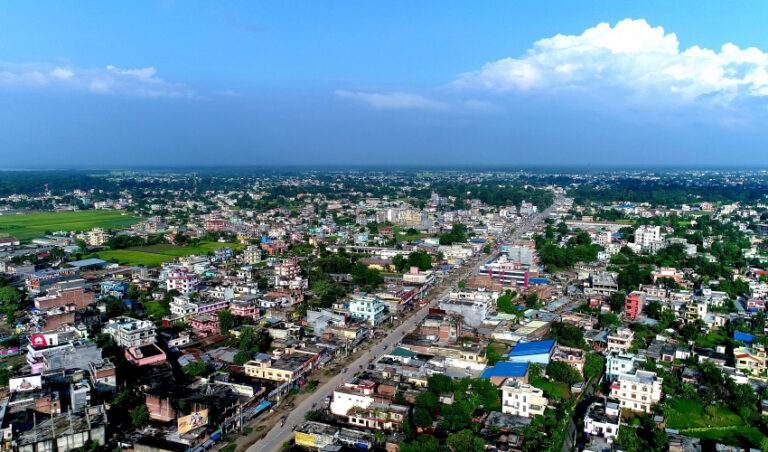A Hidden Gem in the Heart of Nepal
Have you ever heard the saying, “Good things come in small packages”? Well, this perfectly encapsulates the essence of Dhanusha District, a gem nestled within the magnificent country of Nepal.
Setting the Scene: The Vibrant Dhanusha
Located in the heart of Madhesh Province , Dhanusha holds its ground, surrounded by a multitude of intriguing districts and even an international border. To the west, you’ll find Mahottari, a district known for its historic charm and vibrant festivals. A eastern glance takes you to Siraha, a district filled with awe-inspiring natural beauty. Skirting Dhanusha’s southern periphery is none other than the state of Bihar, India, a region famed for its rich history and eclectic culture, whereas to the north you will find beautiful and historical Sindhuli district.
Imagine a canvas painted with the colors of various cultures, each stroke narrating a different tale, each hue representing a diverse community – that’s Dhanusha for you. The district, with its array of vibrant cultures, feels like a living, breathing museum of customs and traditions. Here, diversity is not merely tolerated but celebrated, making Dhanusha a treasure trove of cultural experiences.
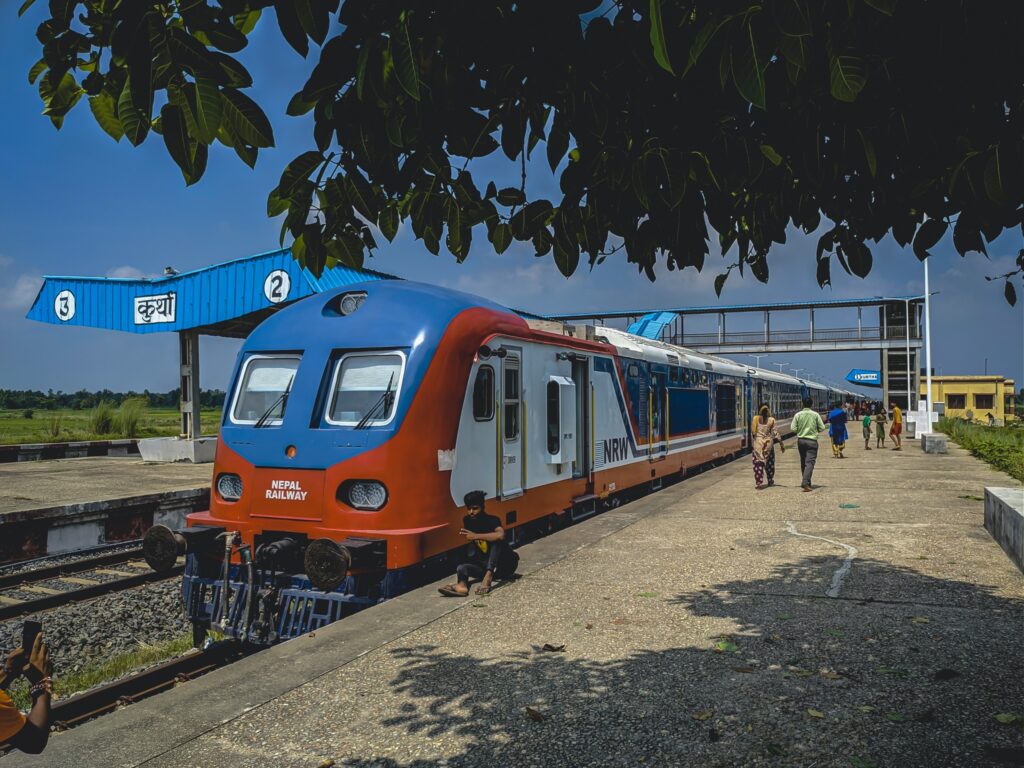
Stepping into Dhanusha feels like embarking on a journey through time. Each corner of this remarkable district whispers stories of its intriguing past, of civilizations that thrived, of traditions that evolved, and of communities that learned to coexist and flourish. The stories of Dhanusha are not just tales of its past; they’re the foundation of its present and the stepping stones to its future.
The district’s geographical diversity is as breathtaking as its cultural wealth. The landscapes of Dhanusha are a feast for the eyes, with fertile plains and serene rivers creating a picturesque scenery. The district enjoys a tropical monsoon climate, which brings life to its vibrant flora and fauna.
Whether you’re a history buff, a culture enthusiast, or a nature lover, Dhanusha is sure to captivate your imagination and leave you in awe of its multi-faceted charm. Truly, it’s a district that epitomizes the essence of Nepal in its fullest and most beautiful form.
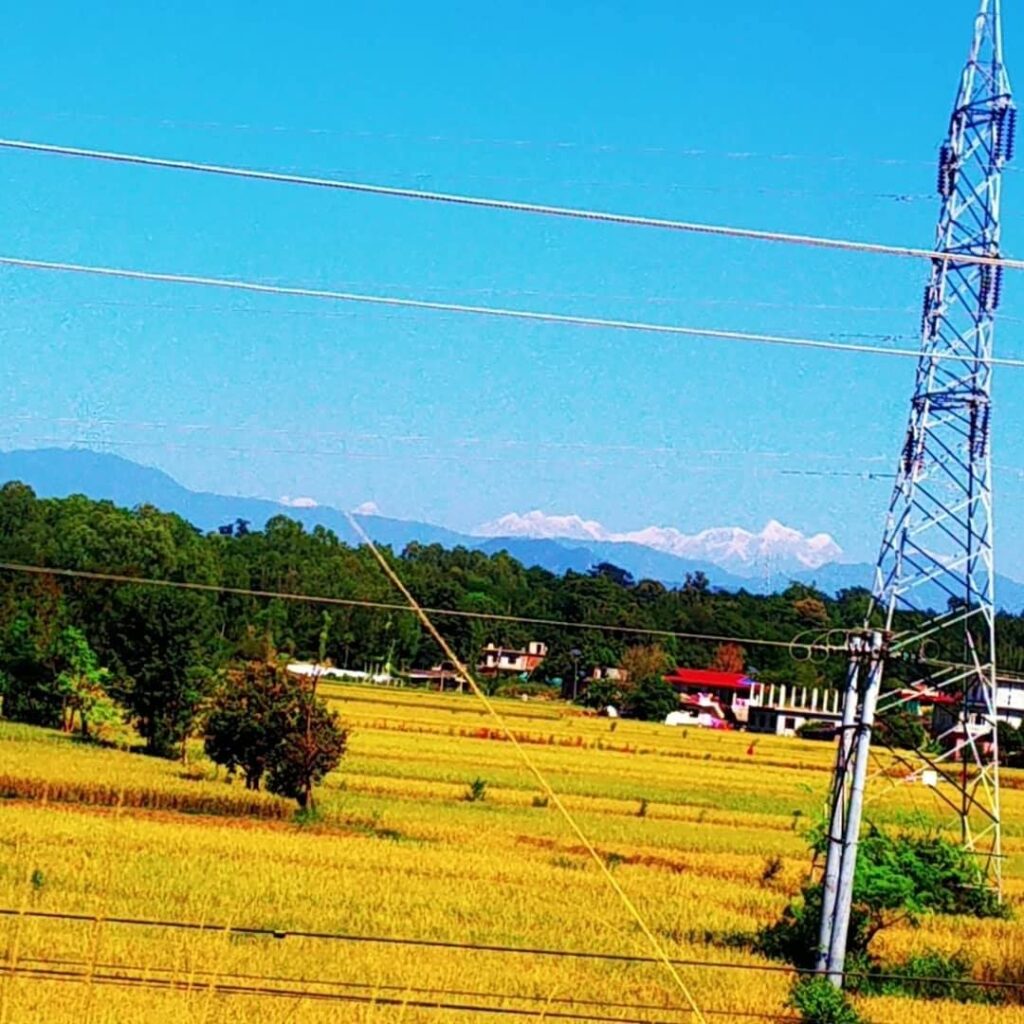
Tracing the Roots: The Cultural Tapestry of Dhanusha
Unraveling the cultural fabric of Dhanusha is akin to opening a timeless book filled with fascinating stories. Its name, derived from the Sanskrit term ‘Dhanush Yatra’, hints at its intriguing origins, rooted in mythology and tradition. The term translates to ‘bow journey’, pointing towards an epic tale from the Ramayana, where Lord Rama’s bow was believed to be found. This unique etymology isn’t just a name; it’s an emblem of Dhanusha’s rich cultural lineage and historical significance.
When it comes to culture, Dhanusha is nothing short of a vibrant melting pot. The district hums with the mellifluous tones of Maithili, a language that weaves together the threads of different communities into a single social fabric. Maithili isn’t merely a language in Dhanusha; it’s a lifeline that ties the district together, reflecting the heart and soul of the local people.

The cultural spectrum of Dhanusha is further enriched by a medley of ethnicities, each bringing their distinct flavor to the district’s diverse society. The Yadav community, known for their pastoral lifestyle and folk traditions, contribute significantly to Dhanusha’s vibrant cultural ethos. The Teli community, traditionally engaged in oil extraction, bring their unique customs and festivities to the district’s cultural table. The Musahar community, traditionally known for their expertise in hunting and fishing, enrich the district with their rich folklore and cultural practices.
These communities, along with others, co-exist in harmony, contributing to the district’s socio-cultural mosaic. The beauty of Dhanusha lies in this harmonious co-existence of diverse cultures, traditions, and languages. Each community, with its unique customs and way of life, forms an integral thread in the intricate tapestry that is Dhanusha’s rich cultural heritage.
In essence, Dhanusha stands as a testament to the diversity and unity that characterizes Nepal, serving as a beacon of cultural richness and social harmony. The district, with its deep-rooted traditions and inclusive society, truly represents the cultural heart of Nepal.
A Peek into Dhanusha’s Society: Literacy, Religion, and Life
Imagine a place where education is valued, and religion weaves an intricate pattern into the fabric of daily life. This place exists, and it’s known as Dhanusha. It’s a district where the flame of knowledge burns bright, as evidenced by an impressive literacy rate that exceeds 60%. Not merely a statistic, this figure is a testament to the district’s commitment to education, its respect for the power of literacy, and its unwavering belief in the transformative potential of an educated mind.
The residents of Dhanusha, with their wisdom gleaned from schoolrooms and life, work towards making their district a better place, brick by brick, idea by idea. The ripples of literacy and education have brought about waves of change in Dhanusha, ushering in socio-economic development and contributing to the vibrant intellectual life of the district.

While education forms the backbone of Dhanusha’s society, religion is its lifeblood. Here, Hinduism is not merely a belief system – it’s a rhythm that orchestrates the daily life of its people. Every dawn witnesses residents engage in early morning prayers, every dusk sees them giving thanks, and every event, big or small, is marked by the essence of faith and devotion. This isn’t just adherence to a set of spiritual beliefs; it’s a way of life that shapes societal norms, fosters a sense of community, and instills a feeling of shared identity.
Hinduism, in Dhanusha, permeates every aspect of the society, from its vibrant festivals and rituals to its cultural practices and societal norms. The district’s many temples echo with the chants of devotion, its streets resonate with the energy of religious processions, and its homes are filled with the aroma of food prepared for religious events. But it’s not just about rituals and practices; Hinduism in Dhanusha is also about values – respect for all forms of life, the pursuit of truth, and the practice of non-violence and compassion. It’s about a society guided by the principles of dharma, where harmony, tolerance, and unity prevail.
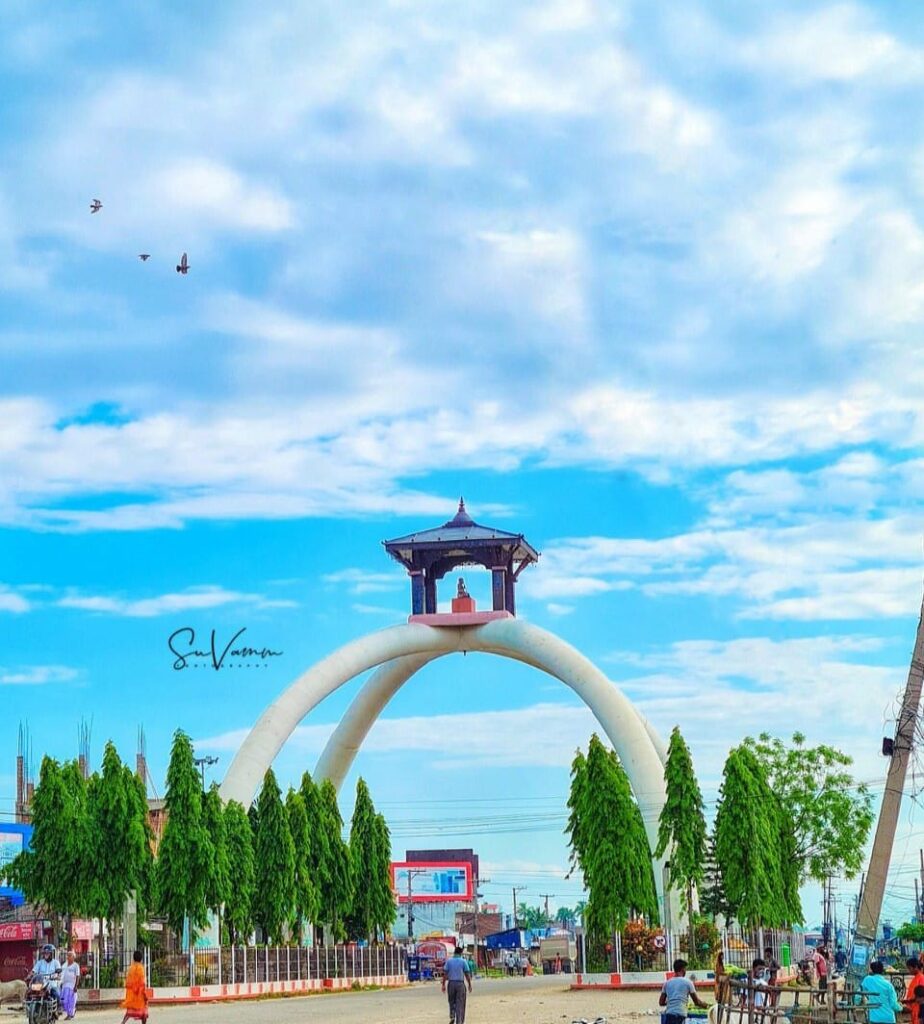
So, a peek into Dhanusha’s society reveals a picture of a district where the mind is enlightened by education, and the heart is guided by faith. It’s a society that values knowledge, cherishes cultural heritage, and celebrates unity in diversity. It’s a society that’s truly a microcosm of Nepal’s spirit and values.
The District Headquarters: Janakpur – The Spiritual Epicenter
At the core of Dhanusha, pulsating with a rhythm of its own, lies Janakpur, the district headquarters. Far more than a mere administrative hub, Janakpur is a city steeped in spirituality and brimming with cultural significance. Its very air seems to echo with the melodious chants of devotion, its streets gleam with the vibrancy of its rich traditions, and its monuments stand tall, narrating tales of divine love and valor.
Janakpur, named after the legendary King Janak of the Ramayana, is not just a city; it’s a sprawling canvas of ancient lore and spiritual significance. It’s the city where, according to the epic Ramayana, the divine prince Rama and the virtuous Sita tied the knot, making it a significant pilgrimage site for Hindus worldwide.

Every nook and corner of Janakpur whispers tales of divine romance and celestial miracles. The city’s crown jewel is the magnificent Janaki Temple, an architectural marvel that also serves as a spiritual lighthouse for the devotees. The temple, dedicated to Goddess Sita or Janaki, is more than a religious monument; it’s a symbol of the shared cultural and spiritual heritage of Nepal and India.
But the spiritual grandeur of Janakpur isn’t limited to its temples. It reflects in the devotion of its people, in the melody of its rituals, and in the colors of its festivals. The city is particularly famed for its grand celebration of Vivah Panchami, the marital union of Sita and Rama, an event that transforms the city into a festive tableau of faith and celebration.
A walk through Janakpur feels like a spiritual sojourn, a journey that soothes the soul and awakens the senses. From the echoes of the temple bells to the aroma of incense, from the warmth of the locals to the enchanting beauty of its architecture, every aspect of Janakpur is designed to resonate with the melody of devotion and the rhythm of spirituality.

So, Janakpur is more than the beating heart of Dhanusha – it’s a spiritual epicenter, a cultural jewel, and an embodiment of Nepal’s rich heritage. It’s a place where history, culture, and spirituality blend seamlessly, promising an experience that’s both enlightening and enchanting.
The Governance: Orchestrating Dhanusha’s Progress
Like the intricate patterns in a symphony, Dhanusha is harmoniously governed by an ensemble of local administrative bodies. The district’s governance is seamlessly orchestrated by a Sub-Metropolitan city and other municipalities and rural municipalities, each playing a significant role in maintaining the rhythm of development and progress.
Sub-Metropolitan city in Dhanusha, the district headquarters Janakpur, acts as a key administrative hub. It is responsible for executing a plethora of administrative tasks, from urban planning and environmental management to infrastructure development and public health initiatives. The Sub-Metropolitan city forms the backbone of Dhanusha’s governance, ensuring the smooth functioning of the district’s various sectors.
The other local bodies of Dhanusha, on the other hand, serve as the veins that carry the lifeblood of governance to the farthest corners of the district. They play a pivotal role in local administration, ensuring that every resident, irrespective of their location, has access to essential services and opportunities. Whether it’s about maintaining law and order, ensuring sanitation, promoting education, or implementing development projects, these municipalities make governance a grassroots phenomenon in Dhanusha.
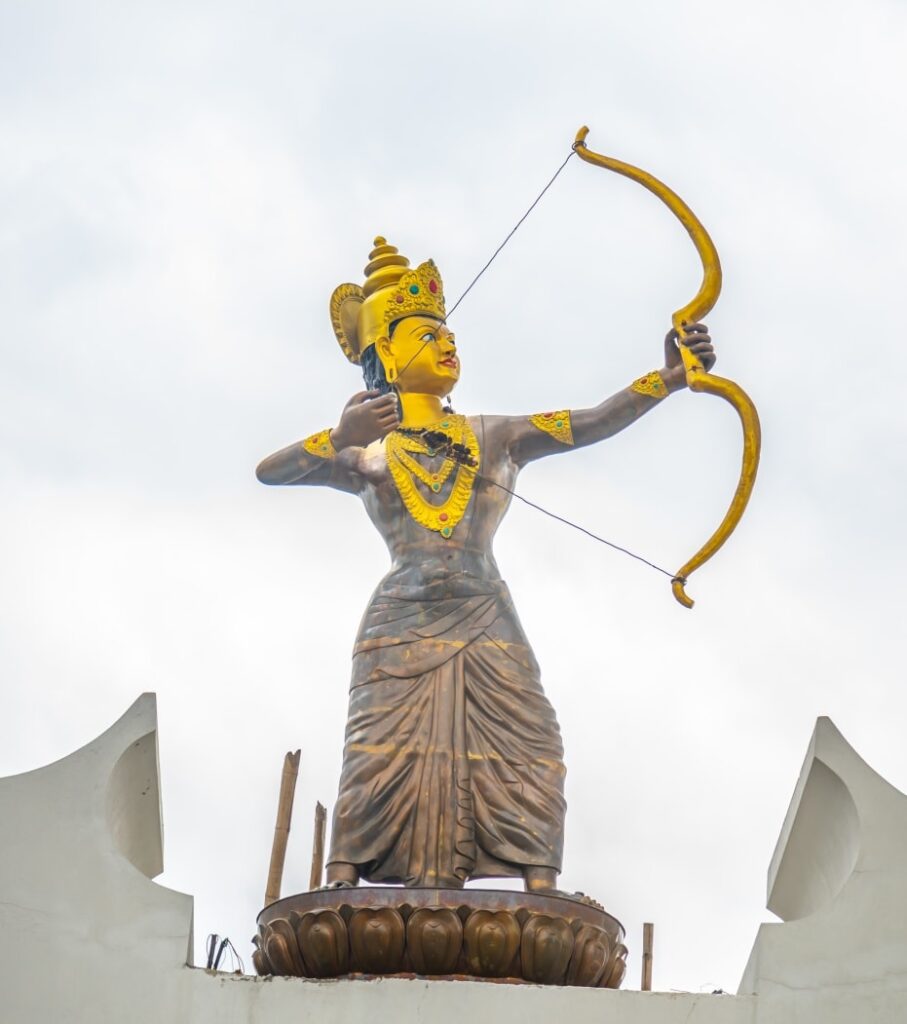
Other municipalities include Chhireswarnath, Ganeshman Charanath, Dhanushadham, Nagarain, Bideha, Mithila, Sahidnagar, Sabaila, Kamala, Mithila Bihari and Hansapur whereas rural municipalities include Janaknandani, Bhateshwar, Mukhiyapatti Musharniya, Lakshminya, Aurahi, Dhanauji Rural Municipality.
The system of governance in Dhanusha is a testament to Nepal’s commitment to decentralization, where power is not just concentrated in the hands of a few but distributed across multiple levels of administration. This system fosters local participation, promotes transparency, and ensures accountability, creating a model of governance that’s both effective and equitable.
At the end of the day, governance in Dhanusha is not just about managing a district; it’s about nurturing a community, upholding its values, and paving the way for its progress. It’s about creating a district that’s ready for today, prepared for tomorrow, and respectful of its yesterdays.
Must-Visit Spots in Dhanusha: Stepping into a World of Wonder
If you thought Dhanusha was merely about its rich culture and history, think again! This district doubles as a traveller’s paradise, boasting an array of mesmerizing spots that promise an unforgettable experience. Let’s embark on a virtual tour of some of Dhanusha’s most iconic destinations:
1. Janaki Mandir: A Vibrant Testament to Nepalese Architecture
Standing tall in the heart of Janakpur, the Janaki Mandir is more than a temple – it’s a vibrant testament to the stunning architectural prowess of Nepal. Built in the late 19th century, this iconic temple is dedicated to Goddess Sita, also known as Janaki. A dazzling example of the ‘Mughal-Rajput’ architectural style, the temple is a feast for the eyes with its intricate carvings, ornate domes, and vibrant motifs. But it’s not just about its physical allure; the spiritual energy of Janaki Mandir is palpable, offering a profound sense of peace and tranquility to its visitors. Whether you’re a devout pilgrim or a curious traveller, a visit to the Janaki Mandir is sure to leave you spellbound.

2. Dhanushadham: The Abode of a Legendary Relic
Next on our list is Dhanushadham, a place shrouded in legends and revered for its religious significance. This is where, according to the epic Ramayana, the broken bow of Lord Rama is believed to reside. The presence of this legendary relic makes Dhanushadham a site of immense spiritual importance for devotees. As you explore Dhanushadham, you’ll be walking the same grounds where divine feats were once performed, giving you a glimpse into the mystical realms of the past. Adding to its charm are the serene surroundings that envelop Dhanushadham, making it an ideal spot for those seeking solace away from the hustle and bustle.
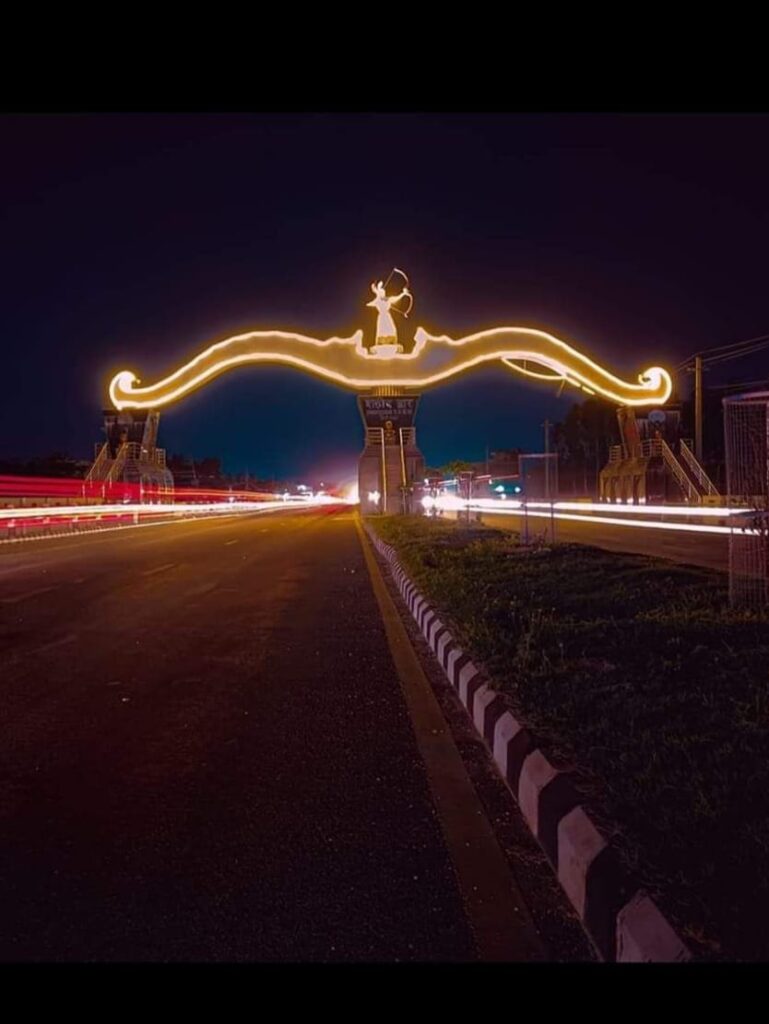
3. Ram Sita Vivah Mandap: The Divine Marriage Hall
Our final stop is the Ram Sita Vivah Mandap, a place that embodies divinity and love. As per the epic Ramayana, this is the very place where Lord Rama and Goddess Sita tied the knot, making it a significant pilgrimage site. A visit to the Vivah Mandap takes you on a journey back in time, letting you experience the grandeur of divine nuptials. The spiritual aura that surrounds this place is as captivating as its history, making it a must-visit spot in Dhanusha.
These gems of Dhanusha are not just spots on a map – they are tales etched in stone, they are chapters of a divine saga, they are echoes of a vibrant past. A visit to these places is not just about exploring Dhanusha; it’s about stepping into a world of wonder, where every grain of sand whispers a tale, and every gust of wind sings a song of yore. So pack your bags, for Dhanusha awaits to unfold its marvels before your eyes!
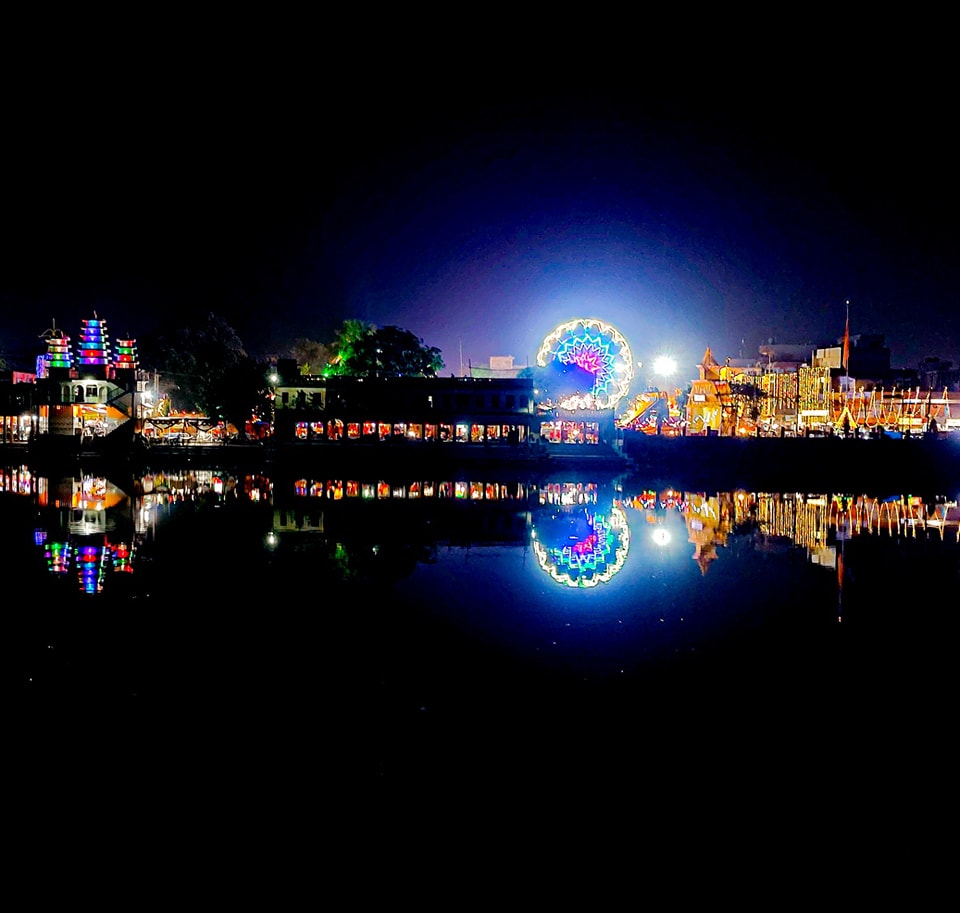
Experiencing Dhanusha
Having visited Dhanusha, I can vouch for the life-altering experiences it offers. A walk in the narrow lanes of Janakpur is like travelling back in time. The aroma of the local cuisine, the murmur of prayers from the Janaki Mandir, the vibrantly painted Mithila arts, it’s all truly mesmerizing.
To wrap it up, Dhanusha District offers an unfiltered taste of Nepal’s rich cultural heritage, majestic history and the warmth of its people. A trip here isn’t just about sightseeing, it’s about experiencing a way of life that’s truly unique.
FAQs: Dhanusha Unraveled
While Dhanusha welcomes visitors all year round, the best time to explore its beauty would be during the cooler months from October to March. This period offers comfortable temperatures for sightseeing and the skies tend to be clear, offering excellent views of the magnificent landscapes. Additionally, the vibrant festival of Vivah Panchami usually falls in late November or early December, making it an exciting time to experience the cultural richness of Dhanusha.
Reaching Dhanusha is fairly easy as it’s well connected by road and air. The nearest airport is in Janakpur, which is connected to Kathmandu by regular flights. From the airport, you can hire a taxi or take a bus to reach various parts of the district. If you prefer the road, there are regular bus services from major cities like Kathmandu and Pokhara to Janakpur. Furthermore, being close to the India-Nepal border, Dhanusha is easily accessible from various parts of Bihar in India as well.
The local cuisine of Dhanusha is a gastronomic delight, with Maithili cuisine being predominant. Don’t miss out on ‘Thekua’, a type of sweet biscuit, and ‘Makuni’, a stuffed roti dish typically enjoyed during festivals. ‘Chiura’ or beaten rice is also quite popular. For a sweet end to your meals, try ‘Khaja’, a sweet and crispy delicacy.
Yes, you can easily find accommodation in Dhanusha. The district offers a range of accommodation options to suit various budgets, from budget lodges to luxury hotels, especially in the district headquarters, Janakpur. It’s recommended to book in advance during the festival season or peak tourist periods for a hassle-free stay.
When visiting Dhanusha, it’s good to be aware of some local customs and traditions. Modest clothing is generally appreciated, especially when visiting religious sites. Always ask for permission before taking photographs of locals or religious ceremonies. Dhanusha celebrates several unique festivals like Vivah Panchami and Chhath with great enthusiasm, and participation or observation can offer a deeper understanding of local culture. However, it’s important to respect local customs during these events.
More…
If you know any more places where we can visit or any other information then feel free to comment of message us.
To read about different places visit thesandeshneupane.com you can find article in Nepali language here.
Watch videos of different places on YouTube channel named as THE SANDESH NEUPANE or click here.
All the photo copyright to the respective owner. For any querry or anything related to copyright mail me with proof at sandesh@thesandeshneupane.com or admin@thesandeshneupane.com .

